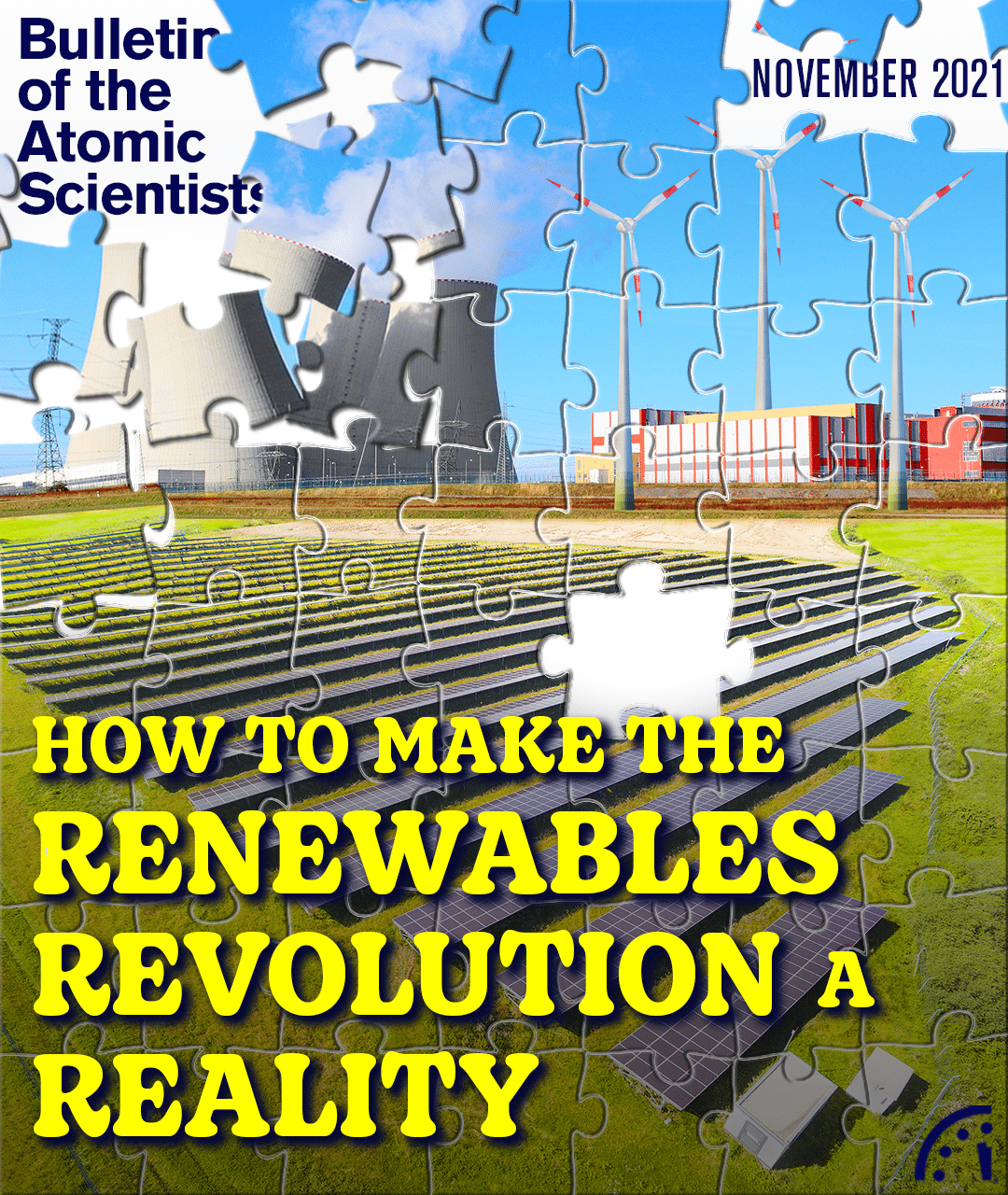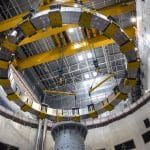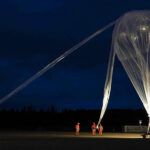The five things that must happen for renewables to fit into the grid: Interview with Greg Nemet
By Dan Drollette Jr | November 15, 2021
The five things that must happen for renewables to fit into the grid: Interview with Greg Nemet
By Dan Drollette Jr | November 15, 2021
What does the United States need to do to start a renewables revolution and get its electrical grid to 50, 60, or even 90 percent green energy?
That’s a question that Greg Nemet, the author of How Solar Became Cheap: A Model for Low-Carbon Innovation, has been studying for years and across many dimensions since earning his doctorate from the University of California at Berkeley in energy and resources. Now a professor in the LaFollette School of Public Affairs at the University of Wisconsin-Madison, Nemet is also a researcher at the Mercator Research Institute for Global Commons and Climate Change in Berlin, Germany and a lead author for the Intergovernmental Panel on Climate Change 6th Assessment Report.
In this phone interview, Nemet tells the Bulletin’s Dan Drollette Jr of five key items that need to be in place to make a green grid a reality, given the intermittent nature of renewables. Nemet dives into whether there is anything we can learn from the experiences regarding photovoltaics that could apply to this nationwide effort to transition from fossil fuels to renewables.
(Editor’s note: This interview has been condensed and edited for brevity and clarity.)
Dan Drollette Jr: An article in the magazine of the International Association for Energy Economics said that when photovoltaic technology was first developed in the 1950s, it cost about $300,000 per megawatt-hour. Now it’s $20.[1] So my first question is really two questions: How did that happen? And can it happen again, with other forms of renewable technologies such as wind or long-duration batteries?
Greg Nemet: That’s an interesting pair of questions. The costs have come down by a factor of 10,000 since the very first solar panels, which were built on the Vanguard 1 and 2 satellites in response to Sputnik. The US Navy bought the first commercial solar panels that came out of that effort, and they were very expensive, but there wasn’t much other choice, and the panels worked well.
That’s been the story with photovoltaics all the way along: It’s been able to grow in these niche markets where people are willing to pay a lot for certain uses—for space stations, and then in the ‘90s for watches and calculators. So it has always had these kind of little protected niches along the way where even though it was expensive, it was functional and had attributes that were better than other technologies.
So that’s kind of what’s gotten solar moving along.
At the same time, there were other policies that helped it, such as the R&D programs in the US in the 1970s that started up in response to the Arab oil embargo, high oil prices, and fears of an over-dependence on imported oil. Consequently, about $1 billion or $2 billion dollars over a 10-year period went into solar R&D under a Nixon administration policy called “Project Independence.” And that really created the architecture that we still use today: purified silicon sliced into wafers. Since then, it’s just been a case of incremental gains in efficiency and ways to make it cheaper.
And it wasn’t just the United States. Japan got interested in photovoltaics, and they had these large multinational corporations like Panasonic and Sharp that started experimenting with solar due to Japan’s industrial policy orientation. And Japan also worked on stimulating demand among consumers by starting up a rooftop solar program, and that was a revelation. Germany then borrowed from Japan the idea that you could actually subsidize consumers to produce their own energy, via household rooftop solar, and that consumers would come up with part of the cost of it. That was a real innovation—what we sometimes call “demand pull”—which made for a huge market for solar.
The outcome was not just lots of solar installed, but it gave the industry enough scale that suppliers could start to make equipment dedicated to the solar industry; it was suddenly worth the R&D and the development in making machines specific to solar.
Drollette: Was there any one big breakthrough?
Nemet: Up until about 2008, the solar industry was getting the basic components for its photovoltaic panels by just using the extra silicon wafers left over from the computer industry. Then the solar industry became big enough that manufacturers began to develop dedicated facilities for it, with expanded production lines.
That was a big dynamic for the photovoltaics industry.
Drollette: Why were experts so bad at forecasting this big drop in the costs of solar power? It seems like I am constantly seeing articles lately that say: “Experts expected it to drop to this price decades from now, but we exceeded that last year.”
Nemet: I actually conducted studies called “expert elicitations” where you do these highly structured interviews with the smartest people in the world on this technology. We had asked them “What’s going to be the price of making silicon—or semiconductors, or solar panels—by the year 2020,” and their range of estimates was always way high. Everybody was high. It’s the opposite of what people would think would happen; critics often say that people that know a lot about a given technology have a motivational bias to be overly optimistic about it, but they’re not.
The experts were pessimistic.
I think what it really comes down to is that there was a shift from being about the science—such as how do you design the photo cells, or make them more efficient—and into how do you optimize these production processes? How do you link these machines together? How do you make incremental innovations?
And those were not the people we were talking to in those interviews back then.

Drollette: Can you be more specific?
Nemet: Sure. We were talking to people that had lots of citations in the academic literature about solar efficiency, or who had set records in the lab for the ability of their chips to turn photons of sunlight into electrons. But it later turned out that where the action really was—and this was around 2010—was among the people who were working in this kind of hardscrabble way, trying to eke out incremental gains in reducing costs in a super-competitive industry.
So I think that’s why the experts were wrong. They were focused on the technology, while the innovation was really on the production side.
I can best illustrate this with a story I heard from a person involved in producing photovoltaic panels in China. He said that when he started in 2005-06, they were hiring people from the Chinese semiconductor industry, because those folks knew how to work with silicon. But he said that today he wouldn’t even invite anyone who worked in the semiconductor industry for an interview. He said, “I want people that worked in the T-shirt industry and making handbags”—in other words, he wanted people with experience in super-high throughput, super-low margins, in fields devoted to finding ways to somehow make a profit in a business that is just all about scale and eking out incremental gains.
And that’s what solar has become. So I think that’s the reason that the experts were wrong; they didn’t have the expertise on where the real innovation was—which turned out to be on the production side.
Drollette: So how does this apply to, say, decarbonizing the nation’s electrical grid? How do we get from the occasional, experimental offshore wind farm that generates electricity to having renewables fundamentally integrated into the grid? What needs to be done to our nation’s electrical grid to accommodate renewables?
Nemet: I would say there’s really five things that you have to do to make a grid work on a scale in which it is composed of more than 50 percent renewable energy.
One is that you should employ multiple different types of renewables at once. To give a simple example, you could have both wind and solar, so that if a cloud comes over but it’s still windy, you’re still generating electricity from windmills. Think of it as technological diversity; it’s better to have a combination of wind and solar than just pure one or the other.
Another thing you need to do to make a renewables-friendly grid work is move the electrons in space, from where you have an excess to where you have more demand. So that means more power lines or more capacity on existing power lines—in other words, more transmission. That way, if you have a place that stops being windy when you need power, you can get still get electricity that is generated from 100 miles away or 1,000 miles away, where the weather is different. So transmission is a second answer.
Drollette: So there really is no technological limitation to shifting electricity from one area to another geographic area? It’s more of a political thing—such as paying for building the infrastructure for this kind of nationwide transmission?
Nemet: The expense of building it is not trivial. Power lines are expensive, and they’re hard to site. People don’t like what they look like, and there’s lots of different entities that you’re crossing. Buckminster Fuller had this idea of a global interconnect with this exact problem in mind, so that if it was sunny in the Western Hemisphere in the daytime, you could be powering lights in the Eastern Hemisphere through a sort of international transmission. So this idea goes back a ways. But yeah, I would say the limitations are probably costs.
And there’s also the attitude of “Not in my backyard.” That’s a big issue, especially for a new line.
Drollette: What are the three other items that you think are necessary to integrate renewables into the grid on a large scale?
Nemet: We talked about getting electricity from one geographic space to another. But you could also think about getting electricity from one time to another, which is what storage essentially does—being able to store electricity and have it ready for when you need it, like in a battery. Maybe charge it in the afternoon when it’s sunny and then start discharging the energy in that battery and using it four hours later at 8:00 p.m.—when people are at home and require a lot of electricity for domestic uses. Storage also gives you a lot more flexibility than if you are stuck with having to use the electricity only at the moment when it’s available.
And batteries are something that’s also come down a lot in cost. Lithium-ion batteries were originally developed for consumer electronics, laptops, smartphones, and now cars. But they’re also useful stationary sources of backup power to support renewables. And storing electricity in big lithium batteries is becoming way more feasible than it once was, because battery prices have come down even more than solar—something like a 90-percent drop in lithium battery costs in the last 10 years. That makes a big difference.
And with those lithium-ion batteries, you can reasonably save a charge for four hours, which in most cases is all you need. That gets you from 4:00 p.m. to 8:00 p.m., which are the peak usage times.
With the electrical system we have today, having an affordable, four-hour battery storage is making a huge difference on the energy landscape. This is something that wasn’t on the map 10 years ago. So that’s really enabling a lot more use of renewables. And if we could expand that from a matter of hours to days…
Drollette: So that’s where the US Energy Department’s energy initiative, comes in—that announced program that seeks to enable truly long-term energy storage?[2]
Nemet: Yeah, though we may not need that in the United States for another 10 or 20 years.
Drollette: Really? Because there was a recent New York Times article[3] that gave the impression that this is a major stumbling block—that we can’t go any further with renewables until longterm battery storage is fixed. To quote the Times: “The government is chasing a promising but uncertain solution: a low-cost way to store electricity generated by the sun or wind for hours, days or even weeks at a time, saving it for when it’s most needed. That goes far beyond what current batteries can do.” But you’re saying we may not actually need something that ambitious?
Nemet: Not right now. It’s really not something that’s limiting our system. And because of that, there’s no markets that would pay for things like week-long storage; no one’s going to pay for a week of storage right now because we don’t really need it.
But it’s good that we’re working on them now, because some of those technologies take a while to pan out to make them commercially available and affordable.
Drollette: So in your estimation, a better target is electrical storage for the grid of something about four hours or 10 hours—something in that range?
Nemet: Right.
Drollette: You said there were at least two other things that you think are needed to make a renewables-friendly grid work?
Nemet: One is responsive demand. Right now, you use electricity whenever you feel like using it. In most cases, you pay the same amount, whether you’re using it in the middle of the night or in the busiest part of the weekday.
But in some places, you have different rates, which financially rewards companies to run their production lines when electricity is most plentiful. So if you could do that more—make electricity cheaper at certain times, in order to encourage demand during slack periods—that would make demand be more responsive, which could really take away some of the demand peaks that happen at the moment.
In other words, you could tell consumers that energy is very scarce and expensive right now, but if they could precool your air-conditioned house in the early afternoon, you’ll compensate them some way. Or just turn their air conditioning temperature up so they don’t use it very much until the evening when there’s less demand.
That type of “demand response” could really help make a renewable-intensive grid work better and use less of the other things. It would mean that less transmission and less storage would be needed, if you have people or companies or just automated systems that preferentially use electricity when it’s plentiful and avoid using it when it’s expensive.
Drollette: Is that what they call a smart grid?
Nemet: That’s my fifth point: All of this is enabled by digitalization throughout the grid. It’s information and communication that allows grid operators to understand where there’s an outage or where there’s congestion.
For example, I have an electronic, internet-connected thermostat, and on the really hot days the utility is able to turn off my air conditioners for a couple hours in the afternoon and I get a $50.00 gift card at the end of the summer or something like that. That’s how information can be used to lessen demand, by having a smart device that’s in the home to avoid this peak in demand. So yeah, so I would say that’s the fifth requirement: digitalization, and information moving around the system.
Drollette: We talked at the beginning here about how how affordable renewables have become—something like four cents per kilowatt-hour. Wired commented that “[a]t that price, a solar plant isn’t just cheaper than a coal plant; it’s cheaper than coal itself.”[4] So if that’s the case, won’t fossil fuels be run out of business without any need for government policies to encourage renewables? Can’t we just rely on the power of the market to make this changeover to renewables for us?
Nemet: A lot of electricity does not really work in the way that normal markets work. I mean, the way almost everybody pays for electricity is that you don’t have a choice. Instead, there’s a monopolist that has an exclusive right to produce electricity in some area—it could be a city, it could be a big part of a state, it could cross multiple states—and that monopolist gets special treatment.
Admittedly, they have regulators that decide what the rate should be and decide whether they can build a new plant and let them put that into the rates. But market forces are relatively recent developments in the electricity system; they have kind of been unleashed a bit in wholesale markets, but in retail, like what businesses and consumers face, there isn’t a market. There’s a regulator that regulates a monopolist, and a monopolist that sells you electricity, but you just decide how much you’re going to buy. You can’t shop around for price or any of that.
So while market forces are stronger than they used to be, the market for electricity is nothing like the market for shoes or computers or something like that where it’s all about supply and demand. So there’s a lot in the world of electricity that isn’t related to markets.
Drollette: I guess this gets to the crux of things. If government does have a role to play to speed up this changeover to renewables, what should policymakers do? What can they do to make the changeover to a low-carbon world happen quickly? What can we learn from the emergence of photovoltaics?
Nemet: Well, infrastructure is something that markets and the private sector generally under-invest in. Things like transmission, energy storage, and charging stations for electric vehicles are all places where the government can play a really big role—one that will lead to the adoption of more of these technologies and a cleaner grid. Those types of investments will really catalyze a lot of private investments. So government can play a role in enabling infrastructure.
And if we wanted to have low cost, safe, and affordable alternatives to fossil fuels, then I think we need to pursue a kind of multi-prong support for innovation. I think the lesson from the emergence of technologies such as photovoltaics is that you need multiple policies to support innovation and to create the expectations that there will be a market for whatever is innovated. When those expectations are strong, then you get a lot of innovation, you get a lot of investment, and that is what we saw with solar, with wind, and what we’re seeing now with batteries.
I would say that if you just take these five key technology elements I talked about—employing different types of renewables, expanding transmission capacity, encouraging better battery storage, incorporating responsive demand, and moving to a smart grid—then that can get us a lot of the way to a low-carbon economy and prevent further global warming. I really do think we need a diverse set of solutions—and we probably need some nuclear, and probably need some carbon capture and other things. But those five elements really can do a lot of the work, and they’re also things that 10 years ago were still too expensive and still too far out there to really take seriously. That’s been a big change; that’s what really has changed a lot of things in a very optimistic direction.
Endnotes
[1] See Book Review, “How Solar Energy Became Cheap” https://www.iaee.org/en/publications/ejarticle.aspx?id=3511
[2] See: https://www.energy.gov/articles/secretary-granholm-announces-new-goal-cut-costs-long-duration-energy-storage-90-percent
[3] See: https://www.nytimes.com/2021/07/14/climate/renewable-energy-batteries.html
[4] See: https://www.wired.com/story/affordable-solar-power-sustainable-economy/
Together, we make the world safer.
The Bulletin elevates expert voices above the noise. But as an independent nonprofit organization, our operations depend on the support of readers like you. Help us continue to deliver quality journalism that holds leaders accountable. Your support of our work at any level is important. In return, we promise our coverage will be understandable, influential, vigilant, solution-oriented, and fair-minded. Together we can make a difference.
Keywords: Greg Nemet, climate change, climate policy, electrical grid, green economy, infrastructure, renewables
Topics: Climate Change






















Off-grid solar batteries are very useful and efficient, and they are also affordable compared to solar panels, as batteries will store the energy.
Thank you for the article. Switching to off-grid is important.
Looking forward to an article on solar batteries.